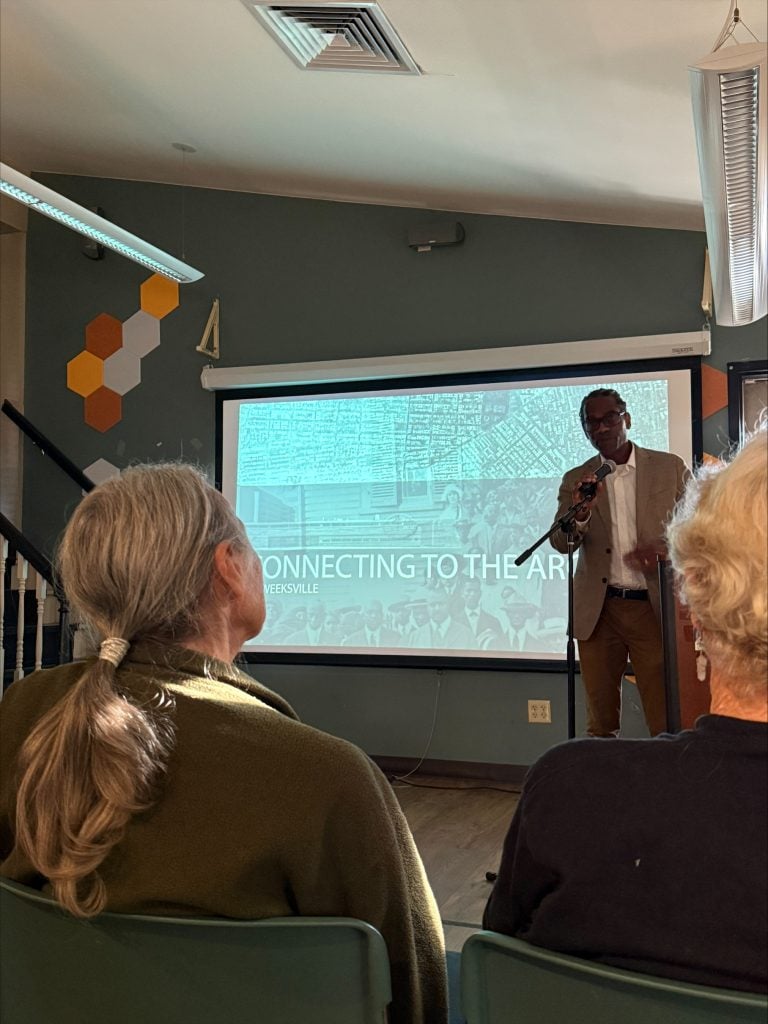
On Saturday, October 4, the Elting Memorial Library hosted its third annual event celebrating the strength, history, and culture of the Black community. This year, the honored speaker was Scott Ruff, an adjunct associate professor of architecture at Pratt Institute and a notable author. His lecture, titled “Repair(ations): Preserving African American Spaces,” delved into a variety of projects focusing on protecting and preserving African American history and communities across the United States.
Ruff’s interest in this crucial topic was sparked during his architecture studies, where he felt the absence of African American voices in architectural discussions. He noted, “There are only about 2% African American architects in practice today.” This statistic highlights the importance of recognizing African American spaces that have been historically overlooked or neglected. Ruff’s narrative introduces profound questions about what constitutes African American space in a nation where so many of these areas have seen significant vacancy and erasure.
During the lecture, Ruff presented studies illustrating two prominent tropes within African American architecture. He offered a detailed comparison between the African American History Museum in Washington, D.C., and Monticello, the home of Thomas Jefferson. His analysis revealed that the museum serves as a powerful statement of American identity, while Monticello metaphorically conceals African American history within its walls and landscape. This juxtaposition foregrounds the struggle for visibility and acknowledgment in the architectural landscape.
As Ruff continued, he explored the limited and often erased history of African American spaces. He remarked on how the origins of these spaces trace back to tragic circumstances, stating that African Americans have often found themselves inhabiting locations where they were unwelcome. This foundation lays the groundwork for understanding Afropessimism, a concept that examines the lingering impacts of historical oppression and the challenges faced in reclaiming space and identity.
“How do you deal with difficult material and move on?” Ruff posed, articulating a sentiment that resonates deeply within the African American experience. He pointed out that this journey is reflected through various cultural expressions, including gospel music, blues, and work songs, all of which convey resilience amidst hardship. His title, “Repair(ations),” reflects a shift in focus from seeking reparations for past injustices to embracing self-healing and reclamation of history.
Ruff further explored how African American communities have managed to reclaim their spaces, highlighting Weeksville, a historic neighborhood in Brooklyn. Established in 1838 by freed African Americans, Weeksville was created as a safe haven but later fell victim to urban renewal and redlining. Despite its obscurity, the community was “rediscovered” in the 1960s when aerial observations revealed its longstanding existence along a historic Lenape pathway.
The irony of Weeksville’s “discovery” is noted by Ruff, emphasizing that its inhabitants were always aware of their heritage. This revelation prompted efforts to restore and preserve the community, leading to increased awareness of its vital role in African American history. Ruff shared anecdotes from residents who were astonished to learn, “I didn’t know this was ours,” illustrating the crucial need to educate younger generations about their historical spaces.
The enduring significance of Weeksville, and communities like it, underscores the importance of preserving African American history in the face of widespread erasure. Ruff continued to showcase his work, including efforts in New Orleans, where he designed a performance and community space for Mardi Gras Indians and helped restore a church devastated by Hurricane Katrina. These projects reveal the ongoing struggle that many African American communities face in reclaiming their places after natural disasters.
Ruff’s current endeavor, The Coles House Project, is another vital effort in this arena. Co-directed by Ruff, this initiative focuses on preserving the home of Robert Traynham Coles, an influential African American architect and activist in Buffalo, New York. The house, strikingly positioned on the edge of an expressway, serves as a poignant symbol of urban challenges faced by African American communities. Through its preservation, Ruff aims to honor Coles’s legacy and ensure that his contributions are not lost to history.
Ruff summarizes Coles’s vision, stating, “[Coles] was an activist architect. He insisted that activists go before architects.” This principle serves as a guiding light for Ruff and his collaborators as they seek to maintain the building while carrying forward Coles’s mission. In doing this work, Ruff not only preserves these physical spaces but also ensures that the cultural narratives tied to them continue to thrive.
Post Views: 1,367



